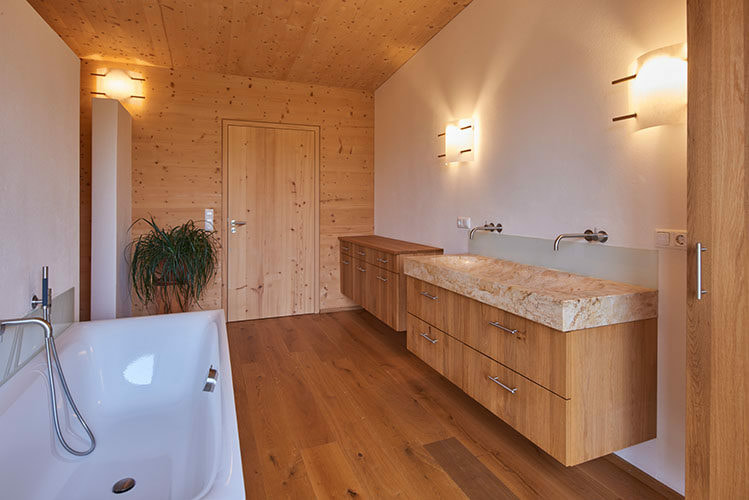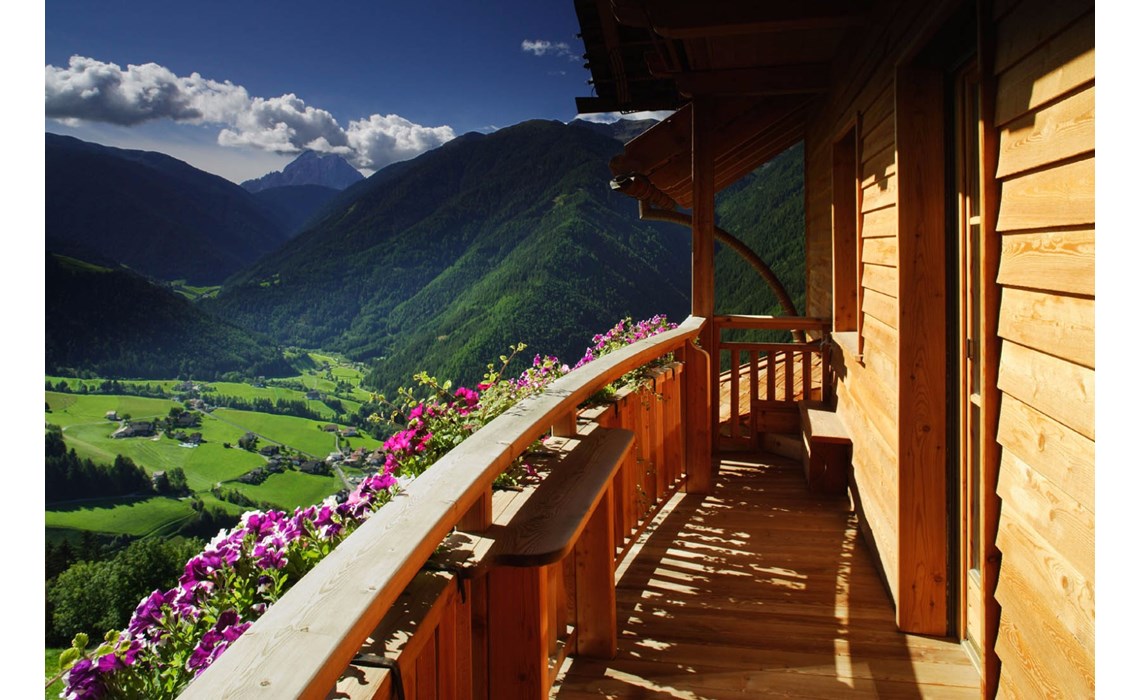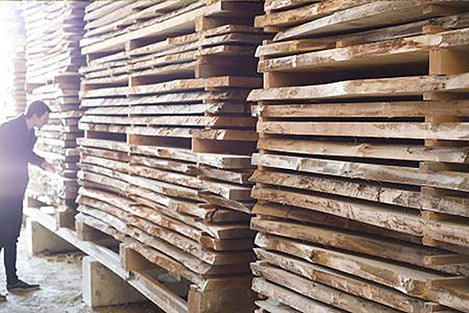|
The timber of Holz100 system is harvested when the sap levels in the trees are at its lowest; influenced by the gravitational pull of the moon cycle. A stable moisture content is achieved by allowing the timber to drain vertically and drying naturally for at least 1-4 years. This drying cycle builds a muscle memory in the cellulose fibres of the timbre, thereby producing lumber that is more stable and less prone to cracking and splintering over time. The result is a controlled indoor climate in Holz100 homes.
0 Comments
Holz100 is a breathable building system that is 100% sustainable. The core principle behind a Holz100 home is its cradle-to-cradle approach. The product is 100% pure solid wood, without chemical toxins or preservatives, and can be reused and recycled back into nature as compost and nutrients for future thriving trees. Holz100 harvests only moonwood, that are slowly dried naturally, allowing the trees to mature and stabilize with a low relative moisture content. Holz100 has a 50-year warranty against mold and condensation. Do you have cabin fever? Never feel isolated again! Holz100 is an innovative breathable building system that brings nature indoors. Holz100 homes are 100% pure solid wood, free of chemicals and toxins. Without synthetic glues and paints, or dust from mineral wool, the building is able to breathe and acts as a natural filter. Holz100 is an eco-friendly product, and perfect for allergy sufferers. The moisture content in your new hardwood flooring is as important as the building structure to prevent shrinkage and gaps once you’ve moved in. Holz100 is a sustainable, natural, sound-proof solution to building a wood home that is less prone to dryness overtime due to its natural slow drying process. The moisture content of a wood home built with the Holz100 system is 6-10%. The Holz100 system is harvested from mature trees that have been naturally exposed to varying temperatures and weather conditions throughout its drying lifecycle. The drying process, therefore, instills in the wood a muscle memory. The slow and natural drying process enables the oxidation and depletion of sugars that otherwise would attract the growth of fungi, mold and insects. Build a sustainable wood home with Holz100. Holz100 harvest trees at the right time and maximizes natural wood drying techniques to achieve quality timber with natural moisture protection. Moisture content below 20%, protects the wood from fungi growth. Moisture content below 8-12% deters insects from feeding on the wood. A wood home built with Holz100 timber will have a moisture content of 6-10% and will be naturally protected from fungi and insects. Thank You
Every coincidence has a meaning. It is wonderful to recognize, that very often one meets just the right person at the exact right time. Suddenly, without looking, they are there. Without the knowledge, help and goodwill of these people, this book wouldn't be in your hands right now. The clue is that over the years, wood produces a superior protective layer all by itself. Sunlight shines onto the different sides of the building and causes the wood to adapt with the most appropriate and protective shade. Old wooden buildings have survived for centuries without having been painted at all.
You probably have occasionally worn dark clothing on a hot summer's day and were melting in the sun. If so, you can empathize with an external wood cladding which has been painted in dark colours and now absorbs the heat. High temperature variations during day and night cause cracks in the paint and destroy its protective effect.
Maintenance and care for wood
Hardly any other building material has been as wrongly judged to be high maintenance as wood has been. However, no other building material has been treated with such harmful products, some extremely poisonous. This leaves many people unsure of how to maintain wooden surfaces effectively. Sloped cross members of wooden fences are more effective than any product applied on an otherwise badly built fence. Good practice extends the lifespan for a considerable amount of time.
If you cannot relinquish a level surface, it is best to fix a board with standing growth rings from below. Water pooling on horizontal wooden surface, halves its life expectancy.
The screw heads often rip into the wooden fibers at the surface and cause small puddles of water. These boards will rot twice as fast. Ideally it is best to screw from underneath. When is it useful to use the kiln?
With our middle European climate, the moisture content ends up averaging around 15-20%. Even in 100 years, it probably wouldn't be any drier. Apartments with central heating have dry air with a moisture content of around 6-10%. Floor boards which have only been air-dried would lose the last bit of moisture, shrink a little and create gaps. In this situation it is useful to rest dry the boards in a kiln before installing the floor. However the natural drying process should have been finalized before the kiln. The resulting wood often needs to be treated with questionable preservatives or glues. Treated wood ends up as toxic waste and cannot be returned into the natural cycle to turn into valuable mulch and nutrients for other plants. It also cannot easily be burned either. This toxic waste is the beginning of a dead end road.
How can you afford to leave this kind of capital lying around for such a long period?
From a business point of view this might seem right. However it doesn't have anything to do with using wood in the most ideal way. The purely technical way of drying wood fast, unfortunately misses out on all the subtle benefits of working with nature. Some economic experts who visited our saw mill showed utter disbelief when they saw a stack of oak boards which had been drying for four years. These boards were to be used for a solid wood floor at some stage. Four years of tying down capital when everyone knows you might as well kiln dry it in just a few days or weeks.
In those years of storage and slow drying, something else and as important is happening: oxidation and several other processes cause the breakdown of nutrients for insects and fungi. This natural process to preserve wood is not happening when speeding up the drying process with a kiln (which takes from a few days to weeks).
A stack of sawn boards which has been stored outside for a few years (protected from water), has been exposed to hot summer days as well as freezing winter nights. These boards have not only dried, they also experienced and adapted to the different weather conditions. This 'memory' has a relaxing effect on the wood.
The rule to remember is: The faster the wood is drying, the more it will warp and twist. This is called the sponge effect. It means that on humid summer days, this type of wood absorbs more moisture from the surrounding air, expands ad works harder than wood which has dried naturally over some years.
However, wood used for building and furniture manufacture has shorter drying and storage times than the highest quality wood used to build instruments. Depending on the type of tree and intended use, one to three years of air drying are sufficient here.
The ability of wood to absorb and release moisture can be compared to a sponge. Timber which has been stored for a long time matures and dries slowly. It stays in shape even when the humidity is fluctuating, whereas younger and kiln dried wood tends to warp and bend. This principle always applies.
Dry Rot and Wood Rot
The water in a living being like a tree is more than just content in a tank which can be filled or emptied. The example with the oboes shows that at the end, kiln dried wood contains the same amount of moisture as wood which has been dried for 30 years. However, oboes made from kiln dried wood crack whereas seasoned wood doesn't, it stays stable and resonates. After a short time, the sap started to drop from both stems, however the piece lying downhill with the tree top lost three times as much sap than the other one, which had the bottom part of the tree pointing downhill. This is not surprising and confirmed our expectation. This ideal way of drying wood naturally results in a better quality product.
I cut the trunk into two pieces and had both pieces pointing down a hill side; one piece was lying with the tree top pointing downhill and the other piece with the bottom of the trunk pointing downhill.
When the tree top points downhill (right), the trunk loses moisture faster than the one on the left. The sap moves through the channel and pipe system from the trunk into the branches to grow leaves and flowers. When the tree is lying tree top downhill, gravity too supports the flow, naturally drains the sap and the trunk dries evenly.
We wanted to test this and undertook the following experiment: One spring, when the trees were growing leaves and the sap was moving freely, I cut down a beech tree. |
Archives
September 2019
Categories
All
|
HoursMon - Fri.
9:30am - 4:30pm |
Officeadmin@holz100canada.com
|
President FRANK GHAHREMANI(416) 725-6747
|








 RSS Feed
RSS Feed


